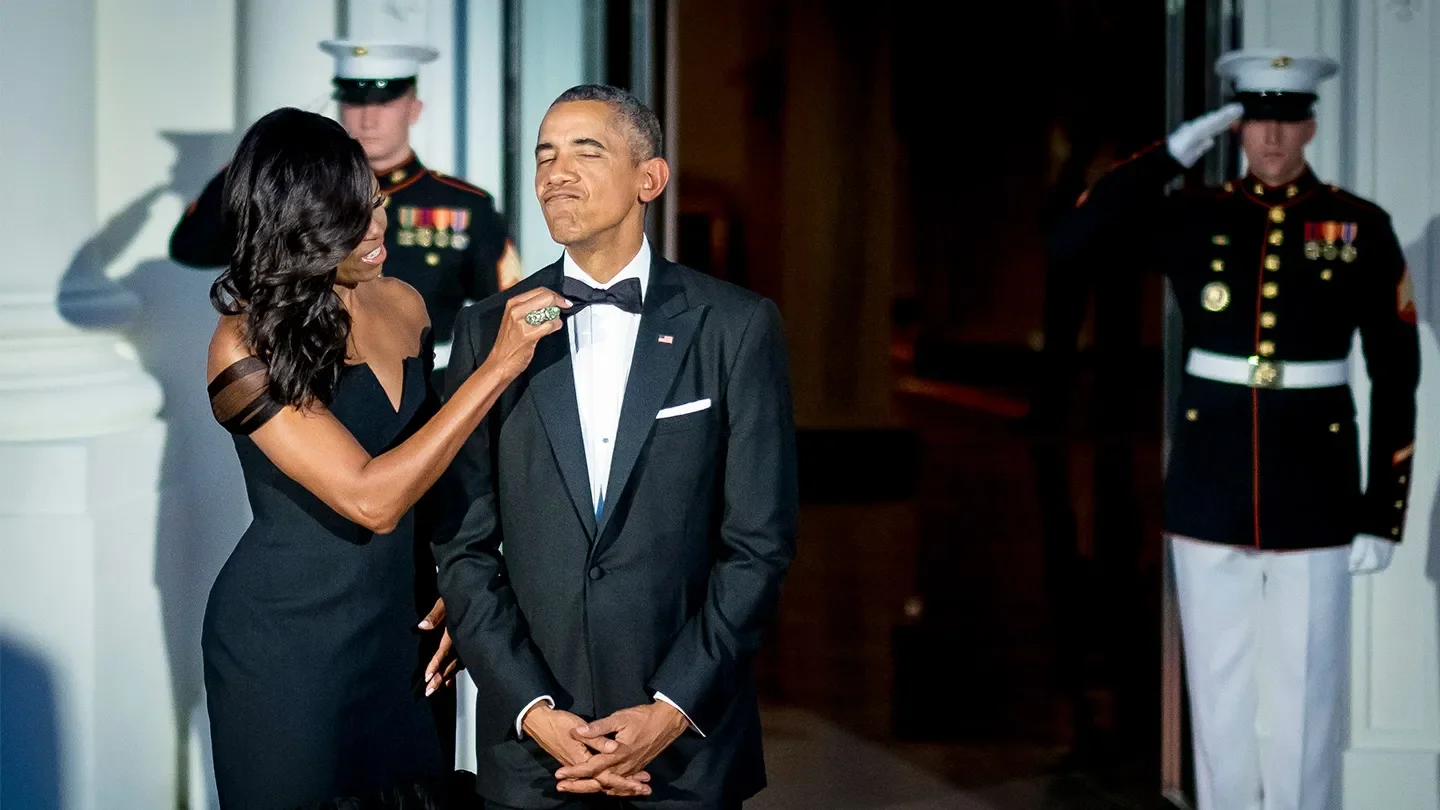THE STYLE HAUSE by Mrs. OBAMA
The Look: Michelle Obama barrier of light through every thread.
Michelle Obama opens her book with a profound observation: "Confidence cannot be put on. But when you're wearing something that is intentional or beloved, clothing can make you feel like the best version of yourself."
Everyone has a style journey. For the revered Michelle Obama, that journey started in Chicago with a regional mix of flair, ambition, and practicality. My own journey began in DC—a city that, while not traditionally considered a "fashion capital," has always possessed a long history of entrepreneurship, ambition, and boldness. Michelle Obama, supported by her longtime stylist Meredith Koop, transformed the nation's capital into the capital of fashion. This metamorphosis was made possible through her collaboration with an ambitious team of tailors, hairstylists, and makeup artists—much like the founding American entrepreneur George Washington, who maintained his own valet and Meredith's official title.
As Vogue proclaimed her "The First Lady we've all been waiting for," Mrs. Obama turned Pennsylvania Avenue into the longest runway ever. She demonstrated unrelenting support not only for the ideals of her husband's presidency but also for the core beliefs, practicalities, and needs of the nation—using her clothing as both message and platform for her own idealism and purpose.
There's a quote from The Look that synthesizes this perfectly: "If it's completely copied, it can't be style." The evolution of First Lady Michelle Obama—from her first days at Princeton in literal red, white, and blue with braids to the denim tuxedo on her book tour—stands as the statuesque definition of style and substance. This observation makes me wonder: style without substance may very well be just fashion, while substance represents the wearer's purpose, and style breathes life into that purpose.
Fashion has long served as a communication tool for both positions of authority and the marginalized. Historically, it was forbidden by law to dress above one's station in some states of the early United States, and for many, this rebellion evolved into an identity marker. Yet facing enormous pressure from reporters, bloggers, photographers, and political opposition—enough noise to crush anyone—Michelle Obama chose not to run from it. Instead, she embraced it for the sake of her unwritten legacy and the legacy of her well-dressed husband.
Having studied the industry as both observer and participant, I was struck with gratitude by the introductory message in her book: a note of gratitude. So stately and understanding, she acknowledges the unseen work of the people behind the scenes and seams who "use their expert hands to make us feel our best…your work is a gift, one that does not go unnoticed." Though many of us serve as our own stylists in professional settings, the goal remains the same as it was for the First Lady: 90% of what we communicate is non-verbal, and 90% of that is what we wear.
Michelle Obama used fashion as both tool and message. Whether it was J. Crew, beautiful brooches, a Compton College sweatshirt, "Shorts-gate," international travel and state dinners, or inaugural balls—every detail was considered, every thread had a tailored purpose. I write this article through the respectful lens of the history I know Michelle Obama forged for others, and ultimately for my two daughters and son.
Fashion has opened doors. Jason Wu gained international recognition through his designs for Mrs. Obama's gowns. Meredith Koop, hailing from Chicago, spent her early years like I did—pouring over fashion magazines in Barnes & Noble, never knowing she would one day serve as stylist to the First Lady of the United States. I never knew my designs would be worn by professional athletes, Hall of Famers, artists, comedians, and fans. The Look was totally unexpected for me when I heard of its release, though I'd followed the first couple's path closely and always respected their style and how they carried themselves.
In reflection, The Look is not just commentary about clothes—it's about how intention, planning, and collaboration can deliver a clear message. This model is ripe for adaptation in business, for through preparation, Michelle Obama consistently showed up as herself: a replenishing source of cultural capital, demonstrating what it means to show up as oneself everywhere your footsteps carry dominion. Lately, fashion can seem unimportant to some, but style is always in the eye of the beholder and builds a narrative acknowledged or not. Isn't there a bit of energy get from a compliment on a statement piece or while out and about just being you?
Michelle Obama while judged immediately externally—something she has no control over—what tool remained at your disposal to communicate a transcending message while backing up her intellect and ideals? Michelle Obama's journey from her first twirl in the mirror after returning home after annual school clothes shopping has evolved into an American icon's narrative, reminding us that clothes are meaningful and style sometimes speak louder than words ina beautiful way.
#MichelleObama #FashionHistory #PersonalBranding #StyleAndSubstance #TheBusinessOfCulture #StyleSection #FashionAsCommunication #DCCulture #CulturalCapital #FirstLadyFashion #IntentionalStyle











